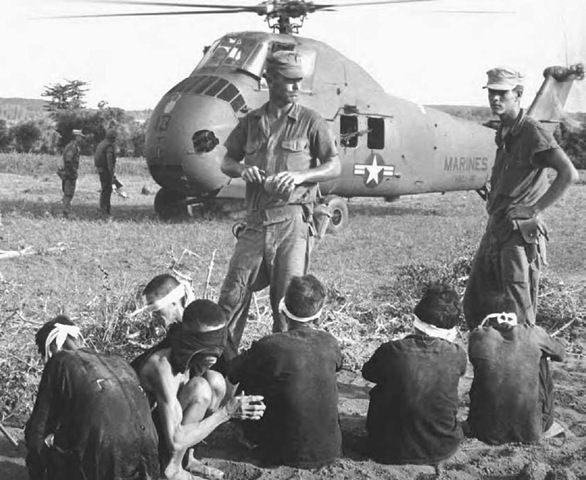Prisoners of war (POWs) have been both actively and passively enmeshed in propaganda. In the aftermath of war, prisoners have often been transmuted into mythic figures and popular cultural icons, but POWs have also become the direct target of propagandistic initiatives aimed at them. The closed conditions of POW camps facilitate far-reaching attempts to reshape prisoners’ attitudes and manipulate their behavior toward specific ends: to render prisoners docile, extract intelligence, or compel them to participate in propaganda activities aimed at their country of origin. North Korea’s and China’s alleged brainwashing of British and American prisoners during the Korean War (1950-1953) caused an intense moral panic in the United States in the mid-1950s. Ironically, both British and American authorities themselves engaged in attempts to reeducate POWs, including German POWs during World War II (as part of the wider denazification effort), and in Korea, where hundreds of thousands of Communist prisoners were persuaded to renounce North Korea for South Korea at the conclusion of hostilities.
It is hardly surprising that the presence of captured personnel in enemy hands should arouse anxiety not only over the prisoners’ treatment but also their behavior while in captivity. Various agreed-upon conventions—at least on paper—govern the treatment of POWs by their captors and the behavior their own armed forces expect of them should they fall into enemy hands (for example, making clear that “collaboration” may be an offense punishable by court-martial). Strictly speaking, the Geneva Conventions prohibit captors from requiring more information from their prisoners than their name, rank, and serial number. The conventions also outlaw other abuses, including attempts either to influence prisoners’ attitudes while in captivity or to manipulate POWs for propaganda purposes.
These safeguards notwithstanding, POWs remain in a uniquely exposed and vulnerable position, with internationally agreed-upon codes of conduct commonly breached. Wars in which combatants develop mirror-image conceptions of their opponents’ inhumanity are unlikely to generate propitious circumstances for humane treatment of surrendered or captured enemy personnel. Moreover, even states that do recognize the Geneva Conventions balk at extending its protective clauses to prisoners captured in conflicts that fall short of declared war (as seen early in 2002 with regard to the Al Qaeda/Taliban fighters transported by the United States to Guantanamo Bay in Cuba). The treatment of “terrorist suspects” thus poses particularly vexing questions concerning the legal status of those incarcerated in what is nominally peacetime. Prisoners may demand the political status that a state is keen to deny them by treating their actions as criminal, and such contests readily become the site of intense propaganda. In the case of the IRA hunger strikes (1980-1981), the election of participant Bobby Sands (1954-1981) to Parliament, followed by his death, helped galvanize support for the nationalist cause both within Northern Ireland and overseas as the IRA placed itself within a long tradition of Irish martyrdom at English hands.
Viet Cong prisoners captured during Operation Starlite await transfer by helicopter to a prisoner-of-war camp in August 1965. The Marine search-and-destroy operation south of Chu Lai resulted in 599 Viet Cong casualties.
Subject to abuse, exploitation, and brutal-ization, POWs provide much material for popular iconography and national myth-making. In the twentieth century POW hero-ism—and the camaraderie of camp life—inspired a plethora of feature films, television series, comics, and novels. World War II loomed large, inspiring multiple representations of Allied escapes from notorious Nazi strongholds, such as Colditz (the subject of a British film and television dramas). Likewise, Japan’s treatment of Allied POWs during World War II has been well documented in fiction and film, perhaps most memorably in David Lean’s movie The Bridge on the River Kwai (1957). But while tales of resistance and endurance or, alternatively, of escape form staples of POW mythology, POWs have also inspired much controversy, with less heroic behavior in captivity sometimes taken as illustrative of failings of “national character.” After the Korean War, for example, a number of prominent American social critics charged that POWs had never before failed to escape, succumbed to disease and death, or collaborated with the enemy in such numbers. Diverse sources of the national charac-terological malaise were identified, ranging from suffocating mothers to material affluence, that had sapped the psychic and physical vigor of a young generation of postwar Americans.
During and following the Vietnam War, U.S. prisoners again became a source of controversy. In the wake of Vietnam, however, the issue of POWs and those missing in action (MIA) has generally been framed around government misconduct rather than prisoners’ improprieties. Unlike their counterparts in Korea, U.S. prisoners in Vietnam have repeatedly been depicted as victims of sadistic Communist mistreatment who were betrayed and abandoned by their government. In line with Hollywood’s cinematic interventions, at best the POW/MIA lobby has charged the U.S. government with making insufficient requests to Hanoi to secure the release of American soldiers in captivity; at worst with conniving with Hanoi in their disappearance. Unleashing much emotion, the POW/MIA issue bedeviled Washington’s attempts to restore diplomatic relations with Vietnam in the 1980s and early 1990s.
As controversy in Western Europe in 2002 over conditions at the U.S. military prison at Guantanamo Bay again demonstrated, prisoners can readily become the focus of political disputes and popular sentiment. As both subjects and objects of propaganda, POWs inspire passions far beyond the scene of their captivity and long after it has ended.

